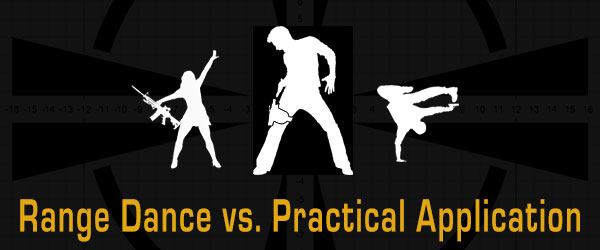
With firearms instructors sprouting from the earth like dandelions in a garden, it’s easy to get lost in the weeds. This proliferation of expertise is an extremely sharp double edged sword. At no time in my life has the average individual been better able to seek out and find quality firearms training. Some is excellent, more is entertaining – useless, but harmless. A small percentage is flat out dangerous. Unfortunately, most share the tendency to focus on the easiest aspects of training while ignoring the more difficult.
Every aspect of training is important. You need to work the gun, but if you can’t hit what you are aiming at and apply it in YOUR life it’s nothing more than a live fire video game. Spraying the berm with random fire displaying fractional split times and a sub second reload is fantastic video, great for the ego. It’s just meaningless unless completed without a single miss under stress, under fire, or against something trying to kill or eat you. Getting shot standing in the wind performing a reload is no consolation, try it from behind cover without a timer. Same with a lighting fast draw that is off target and uncontrolled. Great fun, fantastic video, sells the crap out of classes, but lacking application it’s just range dancing.
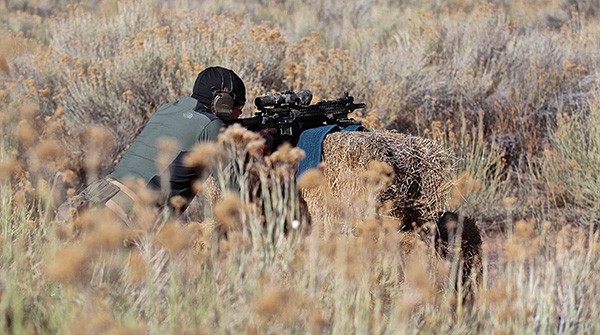
For hunters (those that track and stalk game) a bench has yet to present itself to me in the back country. You may want to practice without mats, bi-pods, and benches. If your game is equally prepared to kill or eat you, accuracy in a hurry from standing or kneeling may not be a bad idea? Maybe, just maybe iron sights and knowing how to use them is advantageous.
In a police world populated by active gunmen, prone probably won’t be there for you either. Practice from real world obstacles and support like walls, rails, fences, or plain old unsupported positions.
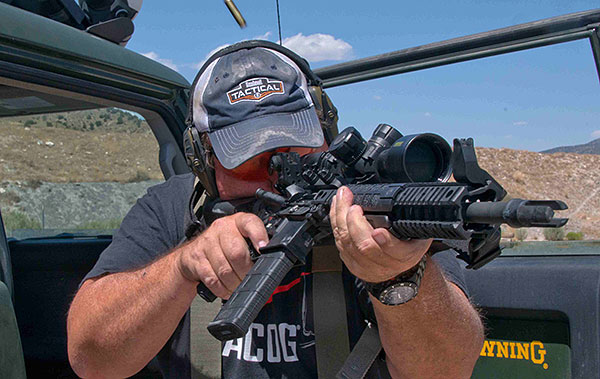
Most importantly, regardless of where you find yourself pulling triggers you must know where your first shot is going to go ALL THE TIME! Failing to properly zero your weapon and knowing precisely where it will impact down range may be the most critical, yet rarely practiced, skill today. Defensively, missing on round one could get you or someone else killed. From a hunting perspective, missing can mean the loss of day, loss of money, loss of meat, loss of bragging rights, loss of respect from your hunting buddies. Zero your rifles and confirm them often, and know where your pistol or shotgun impacts at various ranges. This should be MANDATORY and is the epitome of application.
Breaking it all down
I break training down into four basic aspects, and a fifth that has less to do with the weapon than the person using it. Weapons Handling, Weapons Manipulation, Marksmanship, and Application are all skills based. Each is one aspect of safely handling, using, then applying your firearms (or any weapon). Once developed, they should be followed by Scenario Based Training. Scenario training includes skill based training. Done properly it adds decision making, tactics, and operating under as real conditions as can be safely recreated. Like any training paradigm, each is critical, one supported by the other.
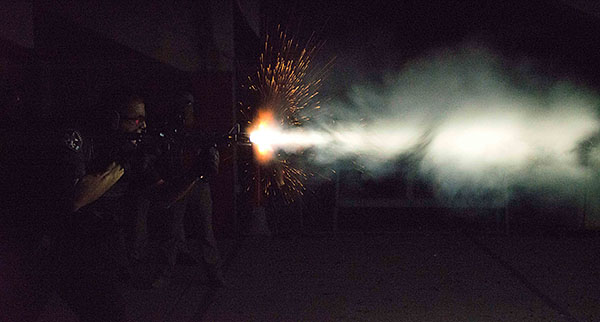
Weapons handling is how you hold, carry, and operate the weapon. It includes the basic safety rules, grip, stance, working the safeties and controls. It’s the simple operation and safe handling of the gun. Manipulation is “running the gun”. Loading, unloading, malfunction drills, keeping it working under fire. Marksmanship is hitting what you are aiming at. It encompasses everything from proven simplistic marksmanship skills to the latest guru inspired “system”. Without regard to how it’s packaged, sold, or displayed for your video enjoyment it’s about hitting. The industry is awash with fortune cookie philosophy, pithy quips, and masterful memes describing marksmanship. Bottom line, hit what you shoot at, period.
Real World Application
Application is the physical employment of those skills learned during the other aspects of training. For patrol applications it includes movement, operating behind and around cover, or from real world positions you will encounter in your environment.
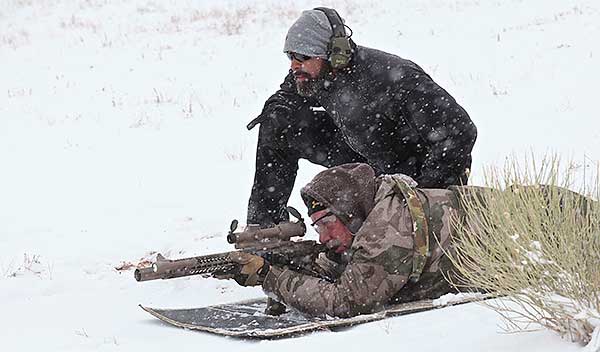
For hunters it may be using sticks, trees, or hasty positions dictated by wary game. Team and tactical environments add gear like helmets, masks, plate carriers and working as a unit in very close proximity to others. If you carry concealed, it’s drawing and shooting from concealment with the gun you carry in the rig you carry it in.
Target identification is critical for ALL under every lighting condition you may encounter. Shoot and no shoot targets should be used with realistic target zones. Standing still during a gunfight is pretty stupid so start moving. Move like a person not “tactidude” or some video game character. Try walking, running, or just moving like you will in real life. Move within the confines of your environment. If you cannot practice these things on a range do them dry or with a blue gun, but get moving. Not everyone has access to a range that lets you actually “use” your gun. It just means you need to be creative and do the best you can. Life’s not perfect, neither is training, but you still need to do it.
Know how to properly zero your rifle for your application. The Internet and even some reputable training is drowning in a sea of useless focus on shooting itty bitty groups at ranges you will never experience. Very little game and very few threats sit still so you can shoot a “group” at them. It’s nothing more than an assessment tool. It has no application outside competition, load development, or basic skill development. Perhaps excepting hog eradication hunters, most of us not deploying in a foreign land get one shot, maybe two with a rifle. Regardless, you must know exactly where your shots go, all of them. Generally the more accurate you are with the first couple the less you need to follow up. Zero your rifle then confirm it regularly and at every range you may encounter in every weather condition. Know yours and your rifle’s limitations along with its application. Rifles today are more accurate than ever, exponentially more accurate than 90% of the people shooting them. Most rifles will “group” just fine, you are the weak link; work on you not the rifle. Understand your application and train for that above all keeping it realistic, with real world expectations.
Bottom Line
Going to the range, practicing reloads and malfunction drills is fun for some, great for video, but only one aspect of training. Here is a thought: use a gun that works and don’t miss, it will reduce your round count needs substantially. It does not mean lots of bullets are not nice to have or fun to burn, but having them does not eliminate the need to be accurate and use a proven gun. Missing should NEVER be an option, it is simply something to correct. Train to hit ALWAYS. Does it mean you won’t miss? Of course not, but you will hit more if that is your standard.
Is it important to know how to fix your gun? Sure, but you use one that works and spend more time using it then fixing it. Use good ammo, reloaded or otherwise, and as often as possible practice with your designated hunting, carry or duty ammunition. If you are going to incessantly practice fixing your broken gun, do it from behind cover, with either hand under stress, not just standing on the line.
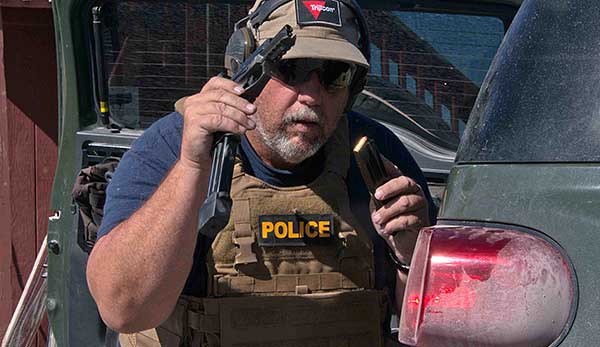
Know exactly where your pistol, carbine, rifle, or shotgun impacts at various ranges. Know where to hold, dial, or aim at each range to get hits using your chosen ammunition and sights. Try it from different positions using various obstacles if you can. Not only will it save your life, but it allows you to employ that firearm with confidence – the most important side effect of practical training.
Confidence in your chosen weapon and your ability to properly operate and apply it will save lives (yours included) and make for successful hunts. I have seen confidence pay off time and time again in actual shootings. Those confident in their skills and equipment are the most likely to prevail. Yeah, I know, sometimes it is good to be lucky. Many a person has lived and died with that attitude. Many a hunter has gone home empty handed when they shouldn’t have, all the while musing about luck. I prefer a different mindset. Luck is great, nice to have, but you will live longer and hunt more effectively implementing proper training. So, train often and hard, but keep it disciplined, and real. If Lady Luck is on your side, good for you. If she’s with your target, you just might still win!


Firearms training is a great thing – I really wish I could get some. I’ve shot IDSP for about 12 years prior to becoming disabled through a back injury requiring the use of a power wheelchair for anything by very limited walking using a cane. I do have a CCL and carry a 1911 lightweight Commander in a DeSantos’ Sky Marshall Xdraw holster. Should I be forced into a situation it is very clear that I will have to defend myself without having the luxury of running to cover, in short I will have to fight from where I am. As my shooting position will certainly not be “classical” I have equipped my pistol with a Crimson Trace laser grip.